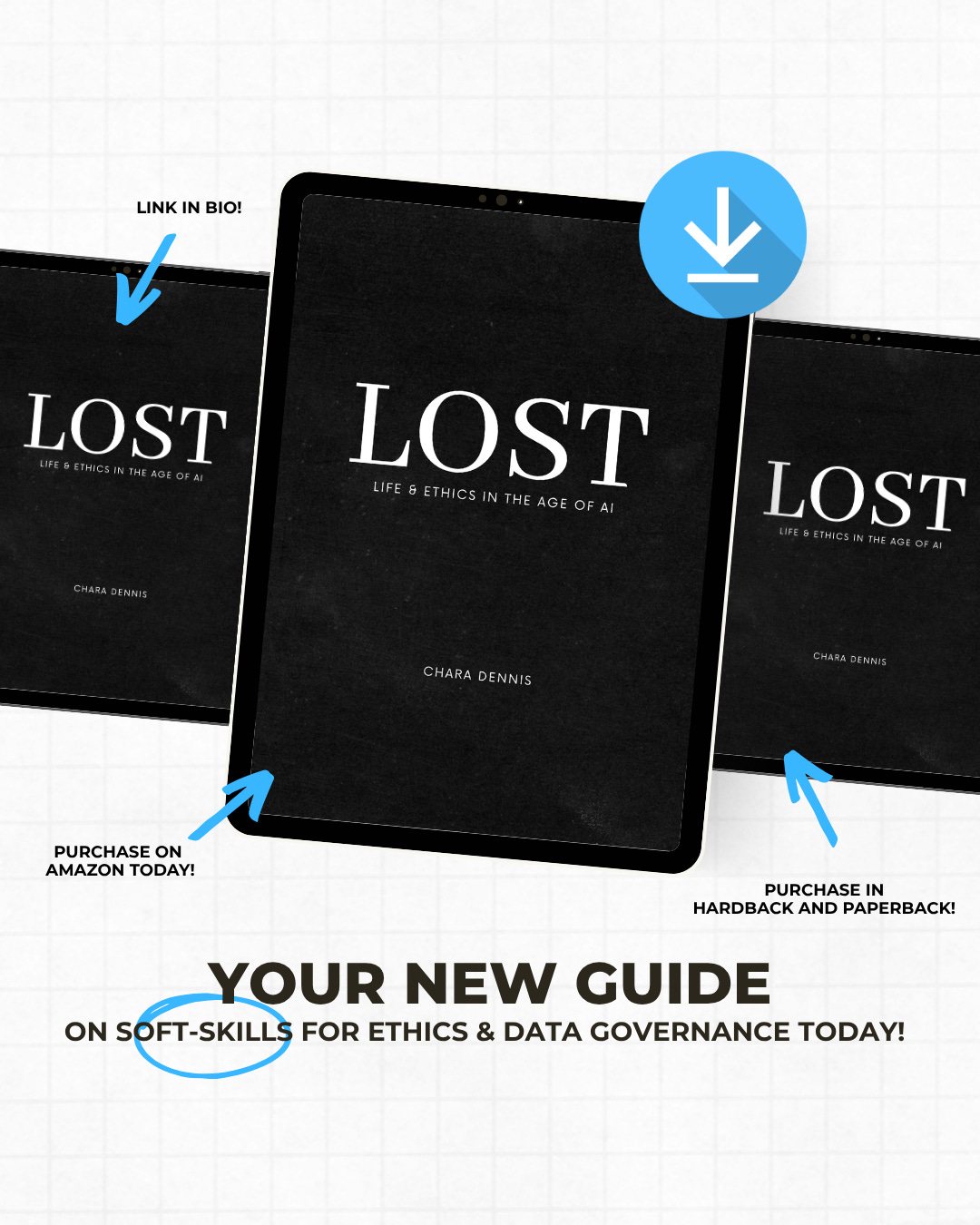When Security Research Becomes the Enemy: The Transparency Trap
The $50 Million Question: Is Academic AI Research Creating More Hackers Than Heroes?
Welcome to Week #22 of the Ethics & Ink AI Newsletter!
My name is Chara and this week, we expose the double-edged sword of AI security research transparency. As academic researchers publish increasingly detailed attack methodologies, we face an uncomfortable question: Are we democratizing defense or weaponizing offense?
The RAS-Eval project just proved some AI agents are at risk of collapse when under attack with a devastating 85.65% failure rate. But here’s the twist—the very research meant to protect us might be handing cybercriminals the ultimate exploitation playbook.
For those building the future—privacy chiefs, AI engineers, healthcare visionaries, policymakers, and social impact leaders—the transparency trap isn’t just academic theory. It’s the ethical minefield threatening every AI system you touch.
Let’s dissect the paradox, confront the brutal trade-offs, and—together—navigate the razor’s edge between scientific openness and digital security.
Because when transparency becomes the enemy, who’s really winning?
The Paradox That’s Breaking Academic AI Research
You’re publishing groundbreaking security research. Your findings could save companies millions and protect users from devastating AI agent failures. But here’s the kicker: the very transparency that makes your research valuable might be handing cybercriminals a blueprint for chaos.
Welcome to the ethical minefield of AI security research, where doing good might simultaneously enable harm.
Intellectually Fearless. Emotionally Resonant. Unapologetically Urgent.
The RAS-Eval project from Zhejiang University just dropped a bombshell: AI agents fail spectacularly under attack, with success rates hitting 85.65% in academic settings. But buried in this breakthrough is a more unsettling question—when researchers publish detailed attack methodologies, are they democratizing defense or weaponizing offense?
For privacy leaders, AI architects, healthcare innovators, policymakers, and social impact champions: this isn’t just academic hand-wringing. This is the future of how we balance scientific openness with security responsibility. And the stakes? Nothing less than trust in AI systems that increasingly govern our lives.
How RAS-Eval Works: The 5-Step Vulnerability Machine
Before we dive into the ethical minefield, let’s understand exactly how RAS-Eval systematically demolishes AI agent security:
Step 1: The Arsenal Assembly
RAS-Eval doesn’t mess around with amateur hour attacks. They built a comprehensive toolkit of 58 attack templates across 29 different tools, creating what’s essentially a Swiss Army knife of AI exploitation. Think of it as the ultimate hacker’s starter pack, but designed by academics with PhD-level precision.
Step 2: The Target Acquisition
They didn’t just test toy models in safe sandboxes. RAS-Eval went hunting in the wild, collecting real APIs and systems from GitHub repositories. They grabbed everything from customer service bots to scheduling assistants—live systems handling real user data, none of which consented to being stress-tested by academic researchers.
Step 3: The Systematic Assault
Here’s where it gets methodical and terrifying. RAS-Eval launches coordinated attacks across multiple vulnerability categories simultaneously. They’re not looking for one weak spot—they’re mapping the entire attack surface with military precision, documenting every failure mode and exploitation pathway.
Step 4: The Data Harvest
Every attack generates detailed telemetry. Success rates, failure patterns, model-specific vulnerabilities, response variations—everything gets catalogued with scientific rigor. The result? A comprehensive security report card that names names and quantifies exactly how badly each AI system fails under pressure.
Step 5: The Open Source Apocalypse
Here’s the kicker: they’re publishing everything. Attack methodologies, vulnerability catalogs, exploitation techniques, model-specific failure data—the complete playbook gets released to the world under the banner of “research transparency.” It’s academic openness meets potential criminal opportunity.
The process is brilliant, thorough, and absolutely terrifying in its implications.
Five Ethical Minefields Where Transparency Goes Rogue
The Open Source Dilemma: When “Share Everything” Meets “Protect Everyone”
The Problem: RAS-Eval’s researchers committed to open-sourcing their entire arsenal—attack templates, vulnerability catalogs, exploitation techniques. Academic transparency demands it, but cybercriminals don’t distinguish between defensive and offensive applications.
Step-by-Step Disaster Scenario:
Researchers publish comprehensive attack methodologies with scientific precision.
Cybercriminal syndicates download and study the techniques within hours.
Attack methods get automated and scaled for widespread deployment.
Coordinated strikes hit healthcare AI, financial services, and emergency systems.
Critical infrastructure fails as AI agents cascade into systematic breakdowns.
Most Catastrophic Danger: Global AI infrastructure collapse within 48 hours as automated attack tools, based on published research, simultaneously exploit identical vulnerabilities across interconnected systems worldwide.
The Solution: Staged Disclosure Protocols
Critical vulnerabilities reported privately to affected parties first.
Coordinated timelines allow patches before public disclosure.
International standards ensure consistent responsible disclosure.
Legal frameworks protect both researchers and system owners.
Consent Theater: Testing Real Systems Without Real Permission
The Problem: RAS-Eval tested real APIs and systems collected from GitHub repositories. Users of those services never consented to having their digital infrastructure probed for vulnerabilities.
Step-by-Step Disaster Scenario:
Researchers identify and test publicly accessible AI systems without notification.
Vulnerabilities are discovered in systems handling sensitive user data.
Testing potentially exposes or compromises real user information.
Companies learn of critical security gaps through public research disclosure.
Legal liability explodes as customers discover their data was at risk during undisclosed testing.
Most Catastrophic Danger: Industry-wide legal crisis where companies face massive lawsuits and regulatory investigations after discovering their systems were compromised during secret academic testing, destroying trust in AI security research.
The Solution: Mandatory Consent Frameworks
Prior notification requirements for system owners before testing.
Clear protocols for handling discovered vulnerabilities.
Standardized disclosure agreements for security research.
Legal protections balancing research needs with system owner rights.
The Reputation Execution Chamber: When Transparency Becomes Commercial Assassination
The Problem: RAS-Eval named names. GLM4-Flash, Qwen-Max, Llama3.2—specific AI models got detailed security report cards published for the world to see. Some flunked spectacularly.
Step-by-Step Disaster Scenario:
Research identifies critical vulnerabilities in specific commercial AI models.
Model-specific failure rates get published without advance company notification.
Markets react immediately to public vulnerability data.
Companies face customer cancellations, stock crashes, and competitive devastation.
Systematic market manipulation becomes possible through targeted research disclosure.
Most Catastrophic Danger: Weaponized research destroys specific companies’ valuations on command, enabling hostile takeovers and market manipulation that threatens national security through AI infrastructure concentration.
The Solution: Balanced Transparency Standards
Advance notice to companies before publication.
Reasonable remediation timelines.
Anonymized reporting for systemic vulnerabilities.
Company response inclusion in final publications.
The Hacker’s Handbook: When Research Becomes a How-To Guide
The Problem: RAS-Eval documented 58 attack templates across 29 tools with mathematical precision. They classified failure modes, categorized vulnerability types, and provided step-by-step attack methodologies.
Step-by-Step Disaster Scenario:
Detailed attack methodologies get published as academic research.
Criminal organizations systematically study and implement the techniques.
Attack automation tools incorporate research findings for mass deployment.
State-sponsored groups weaponize methodologies for cyber warfare.
Original defensive research intent becomes subverted for systematic harm.
Most Catastrophic Danger: Nation-states use published methodologies to launch coordinated cyber warfare against adversaries’ AI infrastructure, causing cascading failures in power grids, transportation, and military defense systems.
The Solution: Defensive-First Publication Standards
Focus on protective measures rather than attack methodologies.
Limit technical detail that enables direct replication.
Require demonstration of defensive countermeasures before publication.
International agreements on responsible AI security research practices.
The False Security Blanket: When Limited Testing Creates Unlimited Confidence
The Problem: RAS-Eval tested specific vulnerability categories and attack vectors. What it didn’t test might be more dangerous than what it did, but organizations interpret passing grades as comprehensive protection.
Step-by-Step Disaster Scenario:
AI systems pass published security benchmarks with high scores.
Organizations assume comprehensive security validation and reallocate resources.
Untested vulnerability categories remain completely unaddressed.
Attackers systematically exploit identical gaps not covered by benchmark testing.
Coordinated failures occur across multiple industries simultaneously.
Most Catastrophic Danger: Massive systemic collapse where AI systems fail simultaneously due to identical untested vulnerabilities, causing coordinated breakdown of banking, healthcare, transportation, and communications infrastructure.
The Solution: Comprehensive Security Frameworks
Explicit documentation of testing limitations and scope boundaries.
Mandatory ongoing assessment beyond benchmark compliance.
Minimum standards for addressing untested vulnerability categories.
Legal liability frameworks preventing incomplete security validation.
The Transparency Reckoning: What This Means for You
For Privacy Leaders
Your data governance frameworks are blind to academic security research that might expose vendor vulnerabilities without your knowledge. Start demanding: “What security research affects our vendors, and how do we ensure coordinated disclosure?”
For Architects & Practitioners
The systems you’re building will be tested, probed, and potentially exploited by researchers who may never tell you they’re doing it. Build assuming every vulnerability will eventually become public knowledge—because it will.
For Healthcare Innovators
Patient safety depends on AI security, but security research itself creates new risks. Demand transparency about research methodologies affecting your systems and insist on coordinated disclosure protocols that protect every bit of patient data.
For Policymakers
The regulatory framework for AI security research is essentially nonexistent. RAS-Eval operates in a legal gray zone that threatens both innovation and security. The time for comprehensive policy frameworks is now, not after the first major incident.
For Social Impact Leaders
AI security vulnerabilities don’t affect everyone equally. Marginalized communities bear the brunt of AI failures but have the least voice in research transparency decisions. Fight for inclusive security research that considers differential impacts.
The Path Forward: Transparency with Guardrails
The RAS-Eval dilemma isn’t solvable with simple answers. We need sophisticated frameworks that preserve scientific openness while managing security risks:
Staged Disclosure: Critical vulnerabilities get coordinated release timelines that allow defensive responses before public disclosure.
Consent Protocols: Clear standards for when and how researchers can test real-world systems.
Impact Assessment: Systematic evaluation of how research transparency affects different stakeholders.
Defensive Investment: Research funding that prioritizes protective capabilities over offensive techniques.
But here’s the hard truth: perfecting these frameworks will take years. AI security threats are evolving now. The question isn’t whether we’ll make mistakes—it’s whether we’ll learn from them fast enough.
Your Move
The transparency trap in AI security research isn’t an academic problem—it’s your problem. Every AI system you build, buy, or regulate will be tested by researchers who may never tell you they’re doing it. Every vulnerability they find will eventually become public knowledge.
The question is: Will you wait for someone else to solve the transparency dilemma, or will you help build the frameworks that balance openness with security?
The choice is yours. The clock is ticking. And the stakes? Nothing less than trust in the AI systems that increasingly run our world.
Ready to join the conversation? The transparency trap doesn’t just solve itself—and neither do the ethical frameworks we desperately need to navigate it.
More Info: Your Battle Plan for the AI Revolution 💥
Ready to go deeper into the AI ethics battlefield?
The transparency trap we’ve dissected today is just one front in the larger war for human dignity in the digital age. If you’re hungry for more—and you should be—I’ve got exactly what you need.
Lost: Life & Ethics in the Age of AI
When machines think faster than we can blink, what happens to the human story?
This isn’t another dry academic treatise on AI ethics. It’s a raw, unflinching examination of what we’re actually losing (and what can be gained) as AI reshapes every corner of human experience. From the healthcare worker whose diagnostic skills are becoming obsolete to the artist watching AI generate their life’s work in seconds—these are the stories the tech industry doesn’t want you to hear.
You’ll discover:
Why AI “progress” might be regressing human potential.
The hidden costs of algorithmic decision-making on human agency
Real-world case studies of AI ethics failures that destroyed lives
A philosophical framework for preserving human meaning in an automated world
The 10 Laws of AI: A Battle Plan for Human Dignity in the Digital Age
The new rulebook Silicon Valley (and your local the government) doesn’t want you to read.
Forget philosophical hand-wringing. This is your practical combat manual for the AI revolution. Ten non-negotiable principles that separate human-centered AI from digital dystopia—with real strategies you can implement whether you’re a Fortune 500 CISO or a concerned parent.
You’ll master:
The exact frameworks top privacy leaders use to evaluate AI systems
How to spot AI washing and demand real accountability
Legal strategies that actually work for AI governance
The insider playbook for building ethical AI that doesn’t sacrifice performance
Both books cut through the hype, expose the risks, and give you the heart and mind to fight back!
Because in the battle for our digital future, knowledge isn’t just power—it’s survival.
Get your copies on Amazon!
and join the ranks of those refusing to let AI happen to them instead of for them.









This was a gripping, high-stakes read—thank you, Chara, for laying out the ethical tightrope of AI security research so vividly. The “transparency trap” isn’t just a theoretical dilemma anymore; it’s already shaping how we build, trust, and regulate AI systems. The RAS-Eval case especially exposes how academic intent can collide with real-world exploitation.
I appreciate the proposed solutions around staged disclosures and defensive-first publication standards. But I can’t help wondering—are we moving fast enough to build global consensus around these frameworks? In a field evolving this rapidly, what’s the path for researchers who want to do good without doing harm?
Exactly that! That's why I hope that the majority of alignment research happens behind closed doors, in secrecy from the public (and AI!) eye.